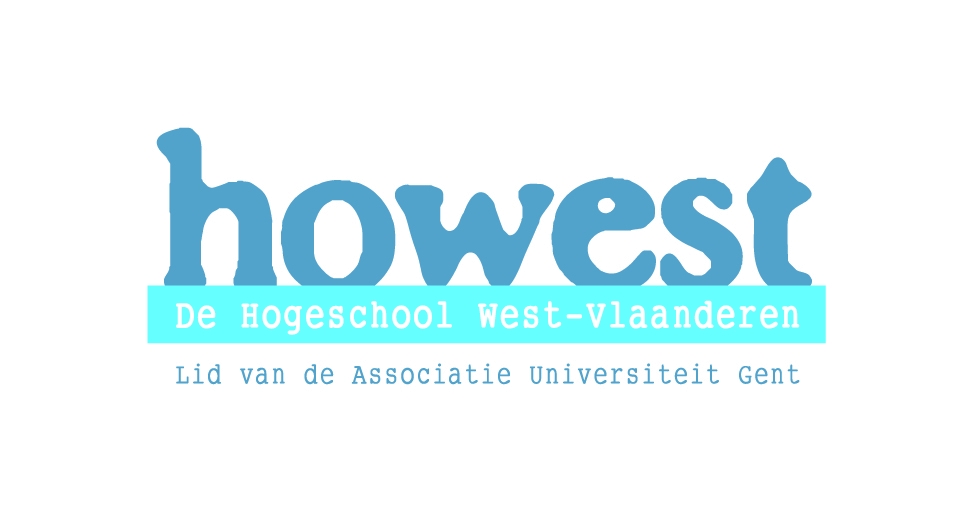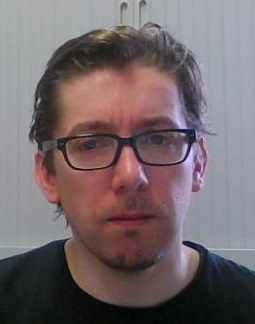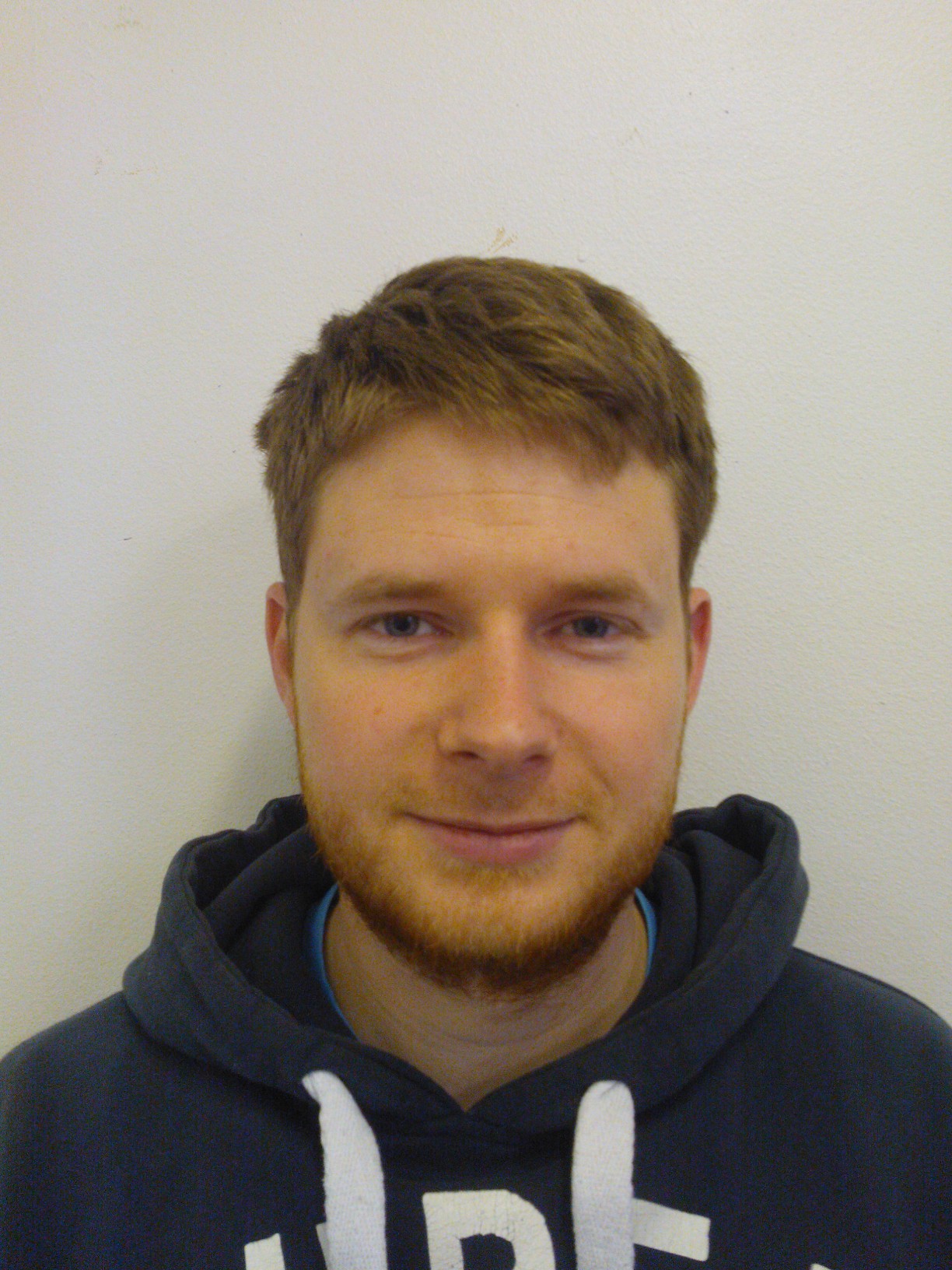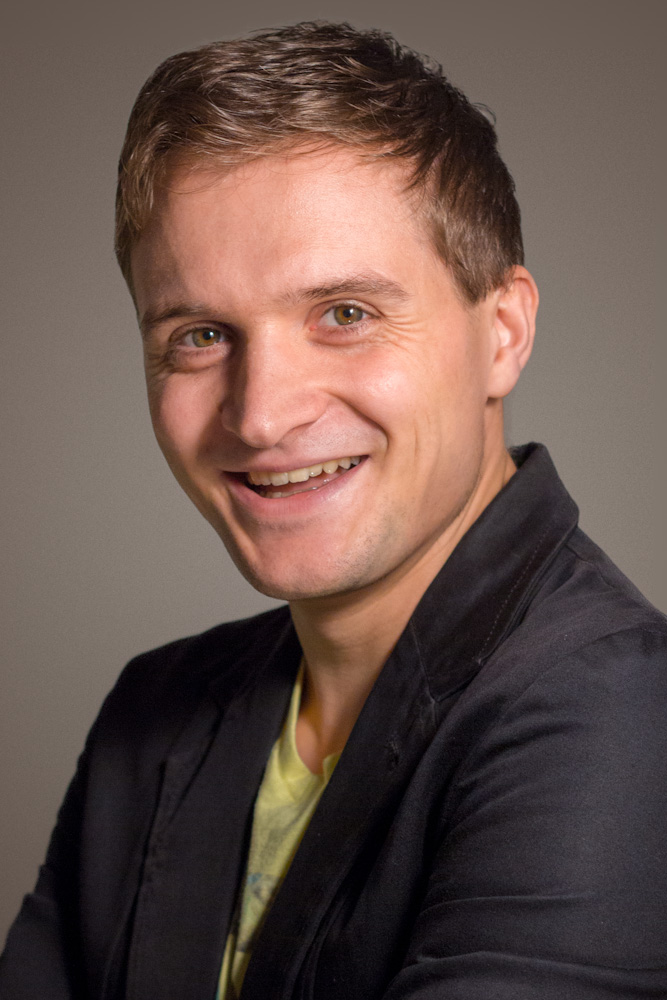
|

|
DAE Track - Applied Game Technology |
Introduction by Geoffrey Hamon
Digital sculpting and prototyping for multiple outputs
 |
Mike Ptacek |
Digital sculpting is an extremely fast and powerful way of working when producing graphical digital content, more specifically organically shaped content such as character models, and even technical hard surface models. It enables an artist to work in a very intuitive way, with less technical constraints and technical knowledge required compared to classic polygon modeling which has been used for years and today still is part of the production pipeline. Designers can achieve three-dimensional concepts faster, compared to limited two-dimensional representations.
Today, different software packages that allow digital sculpting exist. Pixologic, the market leader in creating such software, developed “Zbrush”, which has been a standard in the computer graphics industry for a few years. This software has always been the first to offer new, innovative and groundbreaking techniques.
Digital sculpting offers several types of output: digital models for computer games, animated or VFX movies, pre-production prototyping and designing, and input for 3D printers.
This software is being used for research, production, and teaching purposes. During the presentation there will be a demonstration of the digital sculpting application covering how to achieve different outputs as described above. Besides its conventional use, it will be demonstrated how this software can be used to build content for a tool, developed at DAE, that enables to print 3d content on demand. This example shows how the software can be used to speed up development of business tools and content.
Curriculum Vitae
Mike (37) is a lector since 2007 at Howest University College at the department of Digital Arts & Entertainment. His main expertise lies in modeling, developing characters, global game production for education, research and production. Computer graphics and game technology have been his passion since early age. Mike started in the computer graphics sector at the company ‘Imagination in Motion’ (CG artist for animated movies and entertainment, Brussels, Belgium) and after that, he worked at ‘Playlogic Game factory’ (CG artist for computer games, Breda, The Netherlands). Due to his Bachelor in computer science, an international Master in Game production resulting in a thesis “Workflow for high definition 3D game-characters”, and more than 10 years professional experience with computer graphics, Mike has a broad knowledge of workflows used in this industry.
Digital Arts & Entertainment (DAE) is a department that is specialized in computer graphics for real-time applications as well as pre-rendered video applications. The unique characteristic of the department lays within the combination of both technical and artistic aspects.
Generating believable human animation with fuzzy neural networks
 |
Koen Samyn |
Animation of human and non-human characters is a very important topic for the production of video games, movies or commercials. With the push for 3D worlds that are immersive and fully interactive, a large percentage of production time is spent on the development of character animation. Game studios commonly use handcrafted animations by animation artists or motion capture during production. However, because both techniques are very labor intensive, different algorithms to create procedural animation (both real-time and non-real-time) have been proposed. We will briefly demonstrate the existing techniques and methodologies and their applicability to the problem domain. The main criterion for the fitness of a given technique is the attention to the timing of the animation. In other words, is the generated animation “good enough” in the eyes of a skilled animation artist.
To provide the animation artist with a model that can generate believable animations a fuzzy neural network model of the animation is proposed, where the parameters can be tuned either by machine learning techniques that use motion capture data as training data or by the animation artist himself. We will demonstrate how this real time procedural animation system can be developed, taking the human gait on at terrain and inclined surfaces as example. Because the parameters of this procedural system can be tuned, different styles of animation can be generated while maintaining the basic functionality of the original animation.
The presentation will be concluded with a specific example of the conversion of a set of motion capture data to a working fuzzy neural network model.
Curriculum Vitae
Koen (41) is a teacher and researcher at Digital Arts and Entertainment, the acclaimed professional bachelor program for technical artists. Apart from his research into procedural animation, he is currently involved in two serious gaming research projects.
The first project (Re:Pest) will be launched in high schools in Flanders in September 2013 and was commissioned by the ministry of education. The serious game is embedded in course material that shows students what the different aspects of bullying are and how they can respond to it. Koen was responsible for the implementation of the event based scenario system.
The second project (Friendly Attac) is an interdisciplinary SBO project with Howest, UA, VUB and UG. The role for Howest in this project is to provide the implementation for a domain specific game modeling language. The same scenario system as in the Re:Pest game was upgraded for this purpose.
Dynamic Environments and eye-tracking for research purposes
 |
Brecht Kets |
Setups allowing to simulate reality have become affordable while their quality still improves, resulting in an increasing use for research purposes. This presentation covers the setup Howest University is using for a variety of research projects in its research department of Digital Arts and Entertainment (DAE). A case study of an ongoing project is discussed.
The virtual reality (VR) setup consists of three parts: a virtual reality display, a head tracking system, and an eye-tracking unit. The head mounted display (Nvis nVisor SX 60) is a high resolution, 1280 by 1024, stereo unit with full color microdisplays covering a monocular diagonal field of view of 60 degrees. The head tracking system (Intersense PC Tracker) is a six degrees of freedom motion tracking system, combining ultrasonic information and inertial sensors that allow for real time positional and orientational tracking. Finally, the eye-tracking unit (ASL Eye-track 6000) allows for real time tracking of a participant’s gaze. Using a custom written game engine allows us to react and anticipate upon the actions of a participant. The dynamic virtual environment can be altered in real time contingent to the gaze and actions of the participant.
The setup is used for a variety of research projects and real world applications. In this presentation, a real world case will be discussed concerning humans’ acceptance rate for contrast and color imperfections in surfaces due to construction errors. In this case, a participant is monitored while navigating a virtual environment according to a given task. Using eye-tracking data allows measuring the participant’s reactions while navigating through the environment, providing a detailed log of among others all positional, orientational and gaze data. These data are then used to create an overlaid heat map visualizing the locations visited by the participant’s gaze synchronized in time. Adding multiple heat maps allows to visualize within and between participant effects as well as task dependence effects. The results show which imperfections have a high impact on the participant’s gaze and which ones go unnoticed. Using a virtual environment allows for quick implementation of several situations, based on both real life imagery and simulated materials.
The results of this study will be used by the WTCB (Belgian scientific technical centre for constructions) to develop a method for accepting or rejecting construction errors.
Curriculum Vitae
Brecht is a senior lecturer at Howest University in Belgium since 2007, where he teaches game development in one of the leading international game development study programs, Digital Arts and Entertainment (www.digitalartsandentertainment.com). Before that, he was lead developer in the world renowned Sizing Servers Lab.
Brecht has a Master degree in Expression in Convergent Media, from Gotland University. His thesis covered the subject of collaborative software.
He's been actively involved in game development for several years, and has been writing about XNA and since the launch in December 2006. He hosts the website www.3dgameprogramming.net and has received the Microsoft Most Valuable Professional award in the category DirectX/XNA six times in a row (2008-2013) for his contributions in the community, and one time (2013) in the category Visual C++. Brecht has also co-authored the video series XNA 3D Game Development By Example, Packt Publishing and the Book Building your first mobile game using XNA 4.0, Packt Publishing.
Using Gigapixel Textures in Games
 |
Charles Hollemeersch |
Real time graphics universally use two basic primitives to represent the virtual world. The first primitive is the triangle mesh. Triangle meshes represent the 3D geometry of the virtual objects. A second but equally important primitive is the texture. Textures are represented as a bitmap image and help to add fine surface detail to the represented meshes. Textures play an important role in many advanced illumination and rendering algorithms. It is thus logical that together with the ever increasing desire to visualize more realistic and complex virtual environments, there has been an increasing demand for texture storage and an expansion of the texture datasets used. Furthermore, the increasing screen resolution has also caused an additional need to increase the texture resolution so the screen can be filled with interesting and unique detail.
To allow such detailed textures without requiring prohibitively large memory and bandwidth budgets, a texture compression and streaming system can be used. A texture streaming system allows you to use more textures than can fit in GPU memory, as well as allowing you to store your textures more compact on disc. We will briefly present the pros and contras of the different techniques that have been developed over the years.
To satisfy this demand for more textures Graphine created its Granite texture streaming and compression library. This software library allows game (and other 3D application) developers to rely on state of the art image compression and streaming techniques, without needing to acquire all the knowledge in house. We will show how by using the Granite system game developers can more than halve their texture size (on disc) without lowering the visual texture resolution. In addition to this, our texture streaming system also allows the run time GPU memory cost to be reduced up to four times in some games. Our system also easily scales to multiple GPU threads a requirement for modern gaming platforms. We will conclude our presentation with a detailed demo of our product showing a gigapixel landscape dataset combined together with very detailed game actor textures.
Curriculum Vitae
Charles (31) is Graphine’s technology octopus. Having worked in games, avionics and research, Charles knows what it takes to deliver rock solid software that finishes on time while incorporating the latest and greatest technology evolutions. Charles started in the games industry by releasing the popular Tenebrae mod on the web. Tenebrae was first to feature fully real-time lighting and shadows in a game. After slowing down Belgian's biggest internet service provider due to its popularity, it was only a matter of time until he got headhunted for a job in games. As a graphics programmer at Splash Damage, he helped to co-develop the MegaTexture technology in cooperation with id Software. Charles then went on to work at Barco where he developed graphics monitoring units for plane cockpits, crashes or graphics glitches were simply not an option. Having finished his PhD on real-time graphics and large image dataset processing, Charles now joined Graphine as a co-founder and CTO.
Graphine is a new Belgian startup that develops graphics middleware for game developers by combining far-reaching knowhow with a continuous strive for innovation. The company applies these strengths to realize its mission: delivering HD texture technology that enables game developers to focus on their creative core challenges. Every day, Graphine raises the bar in texture streaming and compression with rock solid, stable technology that require shorter loading time and storage space.
A digital game as training tool in large organizations: A case study on fire safety and emergency evacuation.
 |
Joost Ingels |
In this research project in progress, financially supported by the European Social Fund (ESF), a classical face-to-face fire safety training is translated into a digital game. The three-year project started in January 2013 and has two objectives. First, an effectiveness study will be conducted to compare the classical face-to-face training with the digital game based training. Secondly, the workflow used to develop the digital game is documented and will be distributed to other organizations interested in digital game based training.
Emergency evacuation training is mandatory in public buildings and large organizations, especially in hospitals. In case of an urgency, it is of great importance that hospital staff is able to guarantee safety and evacuation. Classical face-to-face training has some major restrictions. A digital game based training could tackle these restrictions. First, digital game based training does not have the typical time and location constraints inherent in classical face-to-face training. Secondly, it is possible to differentiate instructions depending on the profile of the user. In this research project we will define different profiles within the user group, each profile will have a different level of instruction. Thirdly, using a Learning Management System the progress of the training will be measured continuously on an individual level. This enables us to pinpoint specific topics that are less understood by the students in the digital game based training.
At this point, computer skills and game experience of the user group have been explored based on a quantitative and qualitative approach. A selected group of various hospital staff members have been observed while playing three different types of serious games and were questioned about their preferences concerning graphics, interface, perspectives, controllers and game scenario. The final concept for the digital game based training will be developed through a series of co-creation processes.
The final effectiveness study will be conducted using a randomized controlled trial experiment with parallel groups. A sample of hospital staff members will be randomly assigned to the digital game based training or the classical face-to-face training. Fire safety knowledge, skills and abilities combined with attitudes towards a classical face-to-face training and digital game based training methods will be assessed at baseline and after completing the training. The objectives, methods, concept and results of the project may not only be useful to health care organizations, but illustrate the potential value of digital game based learning in general for large scale organizations who intend to provide digital game based learning to groups of employees or students.
Curriculum Vitae
Joost Ingels is lecturer at the University College West Flanders. Since 2010, he is researcher at the Department of Digital Arts & Entertainment and is working on several research project on education and serious games. His research areas include serious games and various educational topics (like primary school education and teacher education).
From 2003 to 2010 he was a primary school teacher. In 2010 he received a master degree in Educational Science at the Vrije Universiteit Brussel. His master thesis (“Reflection skills in teacher education: an investigation into the nature of the written reflection on specific teaching situations in digital learning portfolios”) was about reflection skills in teacher educations.
Evidence based game design : bridging the gap between game industry and healthcare
 |
Geoffrey Hamon |
In healthcare industry, there is an increasing need to use new media for reaching and helping patients and clients. Empirical evidence has shown that game-based learning technologies can enhance patients’ or clients’ knowledge of their disease or case, and improve their skills and attitudes to cope with it. Although the demand and development of serious games is rapidly growing, the knowledge of evidence-based game design in the game industry seems to be rather limited. This is partly due to the restricted accessibility of scientific results of academic research in the domain and the difficulty to interpret the inconsistencies in the empirical data. However, evidence-based interventions and services are prioritized in health care. On the healthcare side, knowledge of existing game technologies and their characteristics seems to be limited as well. Putting together, there is a gap between the needs of the healthcare sector and the current offer of the game industry.
The main goal of this research project in progress is threefold. First, an online knowledge and communication platform will be created, consisting of many different information categories: scientific literature (evidence-based game development, effectiveness studies), forum, tools, interviews, case studies, best practice documents, methodology information, etc. By summarizing this information in concretely applicable leaflets, we want to reduce the gap between the healthcare and game industry, and facilitate their communication and collaboration. Those leaflets are bundled in a ‘toolbox’ together with templates for game-design documents and workflows. Secondly, the toolbox will be validated by applying it on a number of health-related cases, proposed by the project partners (e.g. autism, drug abuse). The purpose is to guide both healthcare and game industry through a complete process of developing functional prototypes. During the project, the tools, templates and workflows are continuously evaluated and updated by applying them on the different cases. Finally, partners will be stimulated to innovate – using the project results – by valorizing them in their organization on both a social and economic level. During the project we provide various dissemination seminars, network events and workshops.
This project is coordinated by Howest, the University College of West Flanders in Belgium, more specifically by the departments of ‘Digital Arts & Entertainment’ and ‘Applied Psychology’. The course of the project is determined in cooperation with a steering committee, consisting of a representative group of partners, each with a different focus, both from the game and healthcare industry. The game industry professionals develop all kinds of game applications ranging from pure entertainment games to e-learning applications. The healthcare professionals are prevention and health promotion organizations (e.g. health insurance companies), first line health care organizations, hospitals and mental health care organizations. The project is financially supported by the TETRA fund (TEchnology TRAnsfer from IWT). The two years project will start in September 2013, after one year of preparation in cooperation with the partners.
Curriculum Vitae
Geoffrey Hamon has a background in multimedia and communication technology, product design and artificial intelligence. From 2007 till 2011 he worked as a researcher in the Laboratory of Experimental Psychology at the K.U.Leuven. At the moment he is finishing his PhD in the domain of visual perception, more specifically, on gaze communication in complex virtual environments. Geoffrey continues his passion for interactive 3D as the coordinator of DAE-Research (Digital Arts and Entertainment) where he sets up projects in collaboration with the industry and social profit organizations, using game technology for different purposes.













